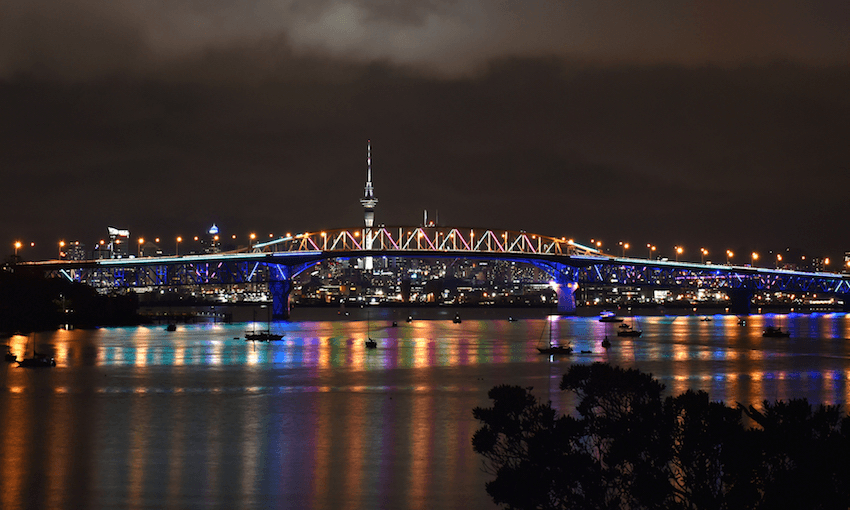On the first ever International Day of Light, Prof David Hutchinson outlines how the science of light is changing the world of computing, manufacturing, agriculture and medicine in New Zealand and around the world.
It’s a hidden fact that our modern world runs on light. Every email, every cellphone call, every website is encoded into data and sent around the world in the form of tiny packages of light down optical fibres. Another hidden secret is that New Zealand scientists are amongst the world-leaders in the science of light. Lasers, the power-tools in the world of light, are used to manufacture cellphones, to scan your barcodes at the supermarket, to detect gases, to test and grade primary produce, diagnose diseases, sort molecules, and countless other tasks.
Photonics is the science and technology of light. Just as the All Blacks, Ed Hillary and other Kiwi sporting heroes have won New Zealand legendary status, Kiwi scientists have won hero status in the world of photonics. Back in the 1970s and 80s a team of scientists led by Dan Walls at the University of Waikato were among the first in the world to understand what makes lasers so special and useful. They laid the theoretical foundations for much of modern photonics and attracted Nobel Prize winners and leading scientists from all around the world to work with them. Since then their legacy has spread across the world.
In the last few decades New Zealand photonics research has gone from strength to strength. The Dodd-Walls Centre for photonic and quantum technologies was formed in 2015 to pool talent and resources from around the country. The results are proving outstanding.
At the University of Otago, Dr Mikkel Andersen has achieved the greatest control over individual atoms in the world – all using lasers. He is using his technique to engineer chemicals atom by atom. Other researchers are using laser light to develop components for quantum computers and probe the strange realms of quantum physics.
On the more down-to-earth side Dodd-Walls scientists are working with the New Zealand meat, dairy, fruit and wool industries to add value to export products. Shining a light on a sample of material and analysing what comes back reveals a huge amount of information about the structure, function and quality of the material. Improving our ability to grade the quality of products allows us to charge premium prices overseas.
Also in the agricultural space, University of Auckland Professor Cather Simpson has spun-out two companies based on research combining light with materials science. Engender Technologies is developing techniques to sort sperm for the dairy industry, and Orbis Diagnostics plans to enable farmers to analyse milk and the health of their cows – right in the dairy shed.
Medical technologies is another big strength of the centre. For example, University of Otago scientist Dr Sara Miller is working on techniques for diagnosing Coeliac disease and other gastrointestinal diseases using laser spectroscopy, and University of Auckland PhD student Simon Ashforth is developing tools for bone surgery using femtosecond lasers. Dodd-Walls scientists are also working on techniques for detecting eye disease, skin burns and several other conditions.
More efficient solar power and other energy-saving technologies are also the focus of research. Unexpectedly, the internet sucks up a large portion of energy worldwide – in particular converting data from optical to electricity and back again. Dodd-Walls scientists are figuring out ways to process data in the form of light which would save heaps of energy and make the internet more efficient. One of the really cool things they’re working on are optical frequency combs, which are tiny discs of crystal that transform a single laser beam into an array of different colours of light.
Not only is this science exciting for the researchers, the vision is for photonics to transform New Zealand industry. Imagine an ecosystem of twenty, thirty or even fifty photonics-based companies in New Zealand all supporting each other and exporting to the world. This would provide really exciting jobs and stimulate the economy and culture. The big advantage with photonics is that, unlike other technologies, you can start a company with very little capital, creating high-value products out of cheap materials. That’s perfect for New Zealand as we’ve got the smart people and not too much capital.
At the centre we want to inspire young New Zealanders to get involved and start dreaming of what we could do with these technologies in the future. I would say, if you’ll excuse the pun, that the future looks bright with photonics.
The Spinoff’s science content is made possible thanks to the support of The MacDiarmid Institute for Advanced Materials and Nanotechnology, a national institute devoted to scientific research.
